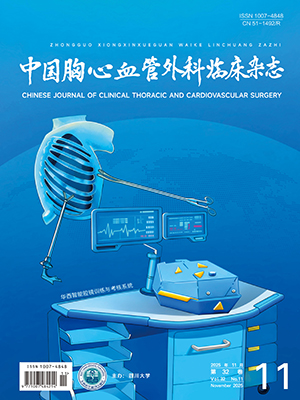Objective To investigate risk factors of postoperative nosocomial pneumonia in patients after lung cancer surgery, and propose corresponding preventive measures. Methods We retrospectively analyzed clinical records of 720 patients who underwent surgical resection for lung cancer in the First Affiliated Hospital of Xinjiang Medical University between June 2003 and June 2012. There were 460 males and 260 females with their average age of 60.37(17 to 83) years. Univariate analysis and multivariate non-conditional logistic regression analysis were performed to investigate independent risk factors of postoperative nosocomial pneumonia in patients after lung cancer surgery. Results Univariate analysis showed that postoperative nosocomial pneumonia was related to 9 risk factors:age eld than 60 years (χ2=26.67, P=0.000), diabetes mellitus (DM, χ2=34.46, P=0.000), chronic obstructive pulmonary disease (COPD, χ2=59.30, P=0.000), long-term history of heavy smoking (χ2=10.40, P=0.001), duration of antacid therapy (χ2=7.69, P=0.006), operation time (χ2=38.12, P=0.000), surgical strategy (χ2=4.22, P=0.040), duration of mechanical ventilation (χ2=21.86, P=0.000), and significant incision pain (χ2=19.69, P=0.000), while preoperative lung function, antibiotic prophylaxis and intraoperative blood loss were not related to postoperative nosocomial pneumonia.Multivariate analysis showed that 8 factors were independent risk factors of postoperative nosocomial pneumonia including age eld than 60 years (χ2=5.43, P=0.020), DM(χ2=8.61, P=0.003), COPD (χ2=9.15, P=0.002), long-term history of heavy smoking (χ2=5.48, P=0.019), long-term antacid therapy (χ2=13.21, P=0.000), operation time (χ2=5.36, P=0.021), duration of mechanical ventilation (χ2=5.72, P=0.017), and significant incision pain(χ2=3.87, P=0.049). Conclusion Patients after lung cancer surgery are susceptible to postoperative nosocomial pneumonia. Proper preventive measures targeting at the characteristics and risk factors of lung cancer patients may reduce the incidence of postoperative nosocomial pneumonia.
Citation: CHANG Tao,ZHANG Zhu.. Risk Factors of Postoperative Nosocomial Pneumonia after Lung Cancer Surgery. Chinese Journal of Clinical Thoracic and Cardiovascular Surgery, 2013, 20(2): 176-180. doi: 10.7507/1007-4848.20130054 Copy
Copyright © the editorial department of Chinese Journal of Clinical Thoracic and Cardiovascular Surgery of West China Medical Publisher. All rights reserved




